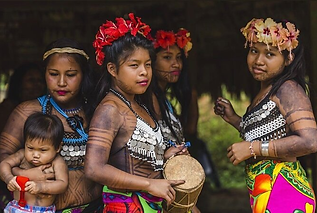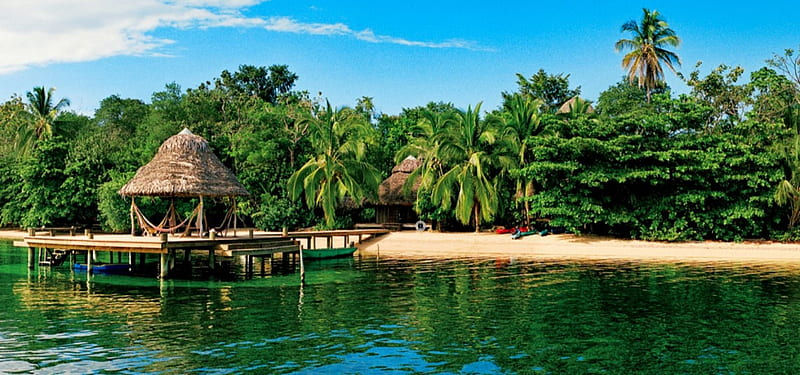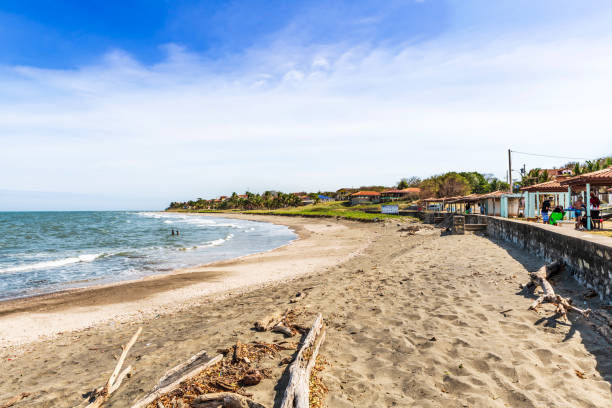
Natures Wonder
Introduction
Panama home to a diverse culture and rich history. Panama's economy mainly depends on the canal and has one of the fastest growing economies in Latin America. Panama has a variety of cultures, ethnicities, and identities. The land of Panama is remarkably beautiful, with its exceptional tropical nature and the country's diverse landscape. On this website, you will learn about all of these parts that make up Panama in more detail.

History
What is now Panama was once inhabited by indigenous groups such as the Cueva and Chibchan peoples. A few centuries later, modern day Panama was colonized by the Spanish in the year 1501. Panama was part of New Granada for around 300 years. New Granada, a Spanish colony, also held ownership of what is now Venezuela, Ecuador and Colombia. At the time, Colombia had possession of what is now Panama. Spain ruled these countries for around 320 years until Colombia gained independence on November 28, 1821. After independence, Colombia joined Gran Colombia. In 1903, Panama became fully independent from Colombia with the help of the United States. In 1904, Panama began the construction of what is now the most important canal in the world, the Panama Canal. During 1989, the United States invaded Panama to remove the ruler of Panama, Manuel Noriega, who was wanted by U.S authorities for racketeering and drug trafficking. In 1999 Panama was given full control over the canal and in 2016, the Panama Papers Scandal took place, leaking confidential information on wealthy individuals and powerful politicians.
Demographics
In the 16th century, Spaniards stepped foot on what is now Panama. At the time of the Spaniards arrival, the land was occupied by the Cuna, Guaymí, Chocó, and other Indian groups. The mixed population of Spanish and Indian descent were titled Mestizos. During the colonial period, African slaves were brought to Panama, because of this, Africans were integrated into the society. During the 19th century, the Panama City-Colón railroad was constructed, hence, new groups arriving. These groups included North Americans, French, and Chinese peoples. Many West Indians came to Panama as workers to assist with the construction of the Panama Canal. U.S nationals, Spaniards, Italians, and Greeks also arrived. Indians are scattered in a few areas, the majority being in rainforests and rough terrain. The largest Indian group is the Guaymí, this group inhabits the western provinces of Chiriquí, Bocas del Toro, and Veraguas. Many of the Guaymí work on the banana plantations of Panama. The next largest group is the Kuna, that are most commonly found in San Blas Archipelago and on the coast nearby. The Chocó is another Indian group that is mainly found in the province of Darién. Many of the Chocó have a keen interest in subsistence agriculture, fishing, and hunting. Some of the Chocó are also traders, sailors, and mechanics. Mestizos are the largest population in Panama at 65% of Panama's people. The majority of Mestizos make up the Savannas, to the west of the canal and in the central provinces of Panama and Colón. In that area, they have intermarried with people of West Indian and African ancestry. Many people of African descent are scattered throughout Panama. These places include the hot lowlands of the Chagres River basin, the eastern province of Darién, and the Caribbean lowlands. People of the British West Indies are recent arrivals and happen to be a minority. They mainly live in Panama City and in Bocas del Toro province. While the U.S citizens live in the canal area or Panama City. Significant minority groups in Panama include the Chinese, East Indians, and Middle Easterners. All of these groups play an important role in commerce and industry. There is a sizable Jewish community in Panama. This community was developed by Jews seeking refuge during the Inquisition from Portugal and Spain. When they first came, they were forced to practice their religion in confidentiality. The Jewish population was increased by immigrants from the West Indies in the mid 19th century. Panama had the Western hemisphere's first Jewish president in the 1980s, Eric Arturo Delvalle. Because of Panama's geographical location they have developed a rich and diverse population.





